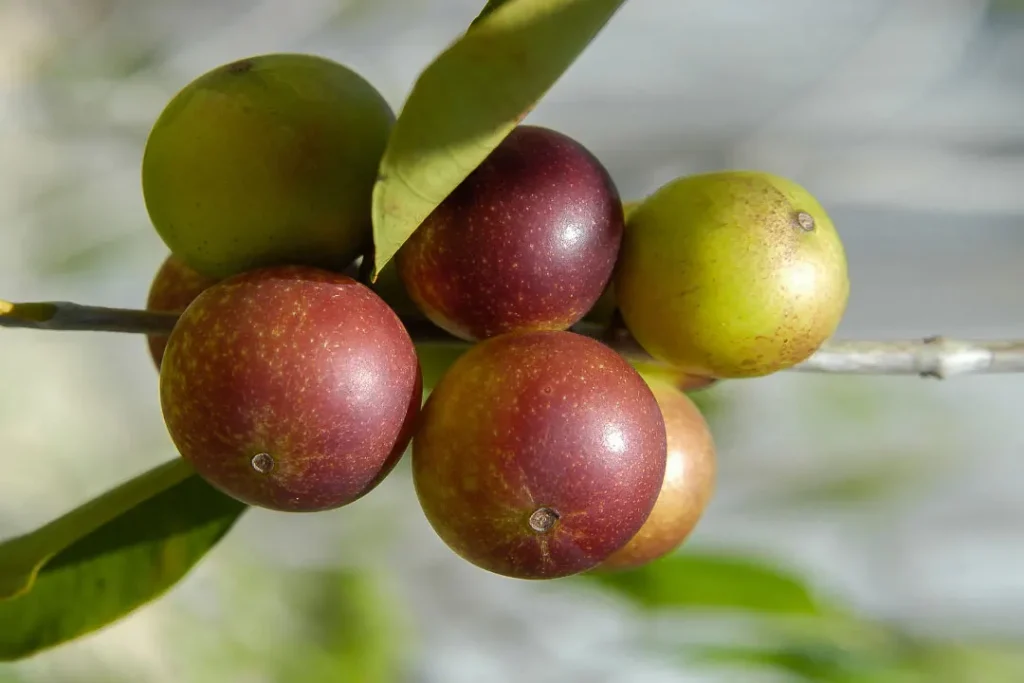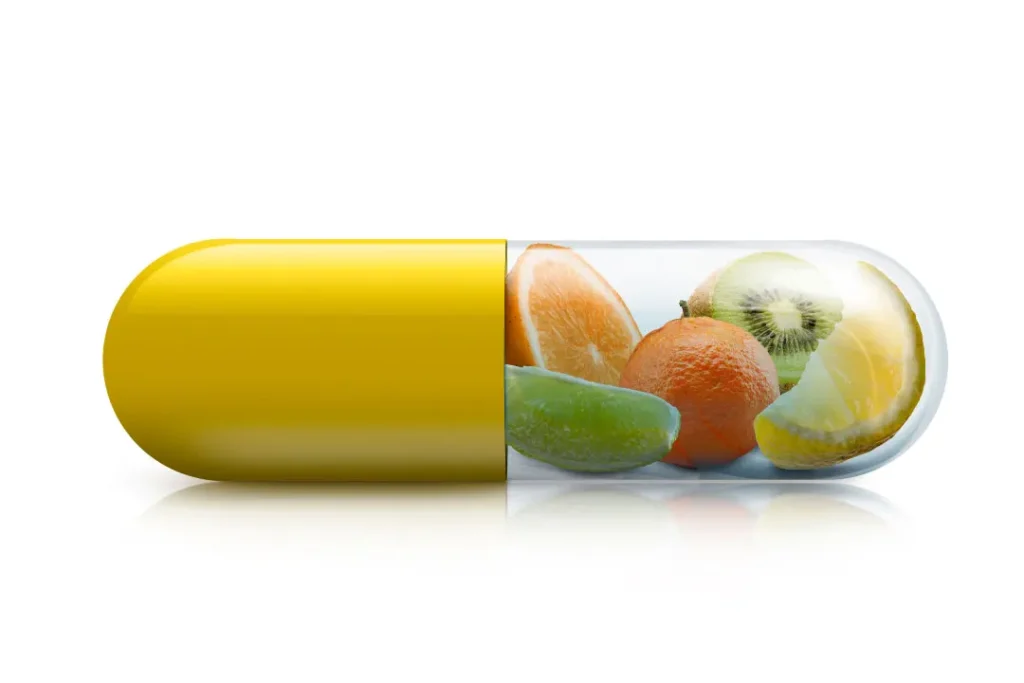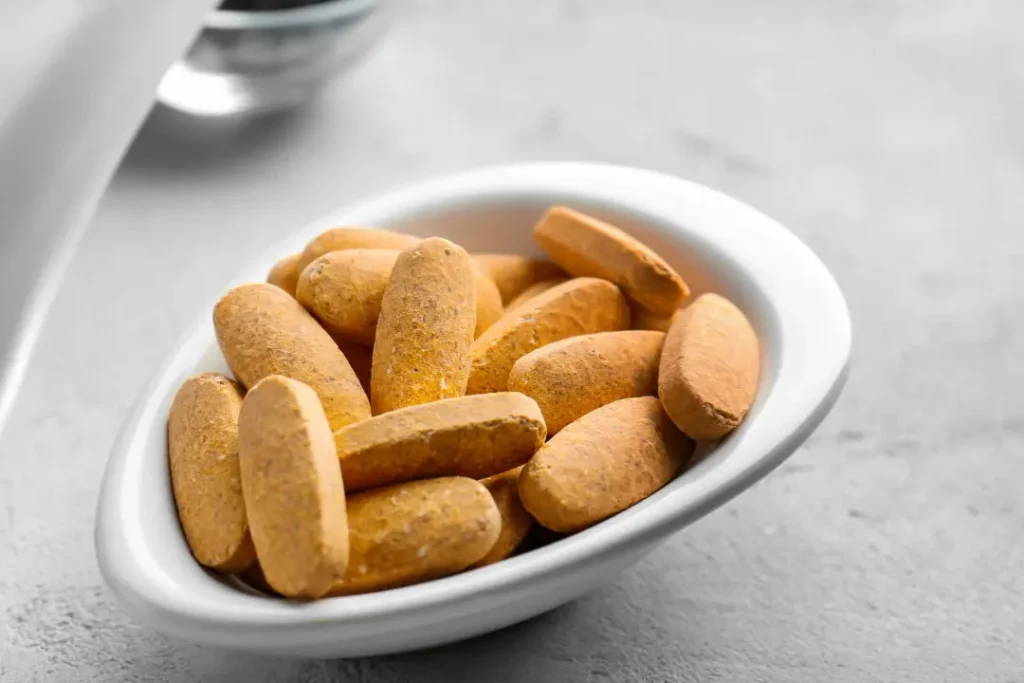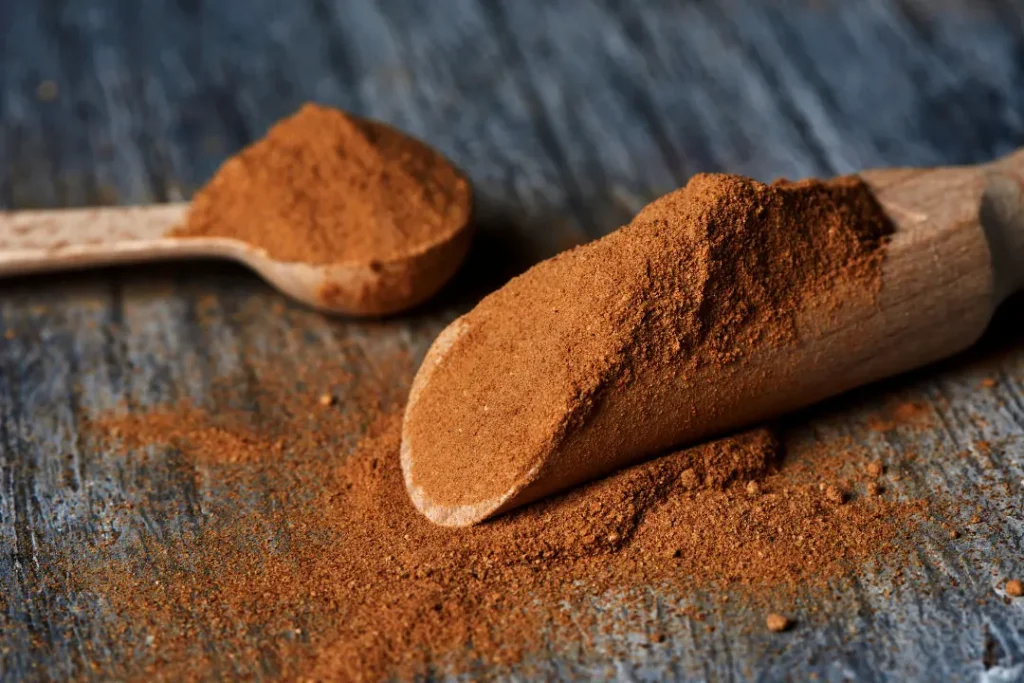Due to the skin-friendly, immune-boosting qualities of its superfruit, the low-growing shrub native to the Amazon rainforest, camu camu (Myrciaria dubia), has attracted the attention of wellness professionals and consumers alike. The fruit has a high nutritional richness with an impressive concentration of vitamin C and a variety of phytochemicals. In order to shed light on the chemistry of this fruit and its physiological effects on the human body and brain, this study aims to clarify the nature of camu camu, as well as its health advantages, ideal dose, probable adverse effects, and interactions with other drugs.
You May Also Like:
Nature of Camu Camu
The tart berry’s pulp is an abundant natural source of vitamin C. It contains up to 3% of the fruit’s weight in vitamin C and boasts a concentration up to fifty times that of oranges. The beneficial nutrients don’t end there. The fruit is loaded with polyphenols including flavonoids, anthocyanins, ellagic acid, and others that have anti-inflammatory, antioxidant, and maybe anticarcinogenic properties. The fruit offers a substantial quantity of important fatty acids, including minerals like potassium and calcium, along with rehabilitative amino acids.
The coordinated action of these phytochemicals is principally responsible for camu camu’s antioxidant capabilities. These substances may stop the development of disorders linked to oxidative stress by neutralizing free radicals, reactive molecules that can harm cells if left uncontrolled.

Health Benefits of Camu Camu
Numerous studies show that consuming camu camu has a variety of health advantages. The high vitamin C concentration helps your immune system work properly, lowers oxidative stress, and promotes the production of collagen, a protein crucial for the health of the skin, bones, and joints. Those who struggle with low iron can benefit from camu camu, as vitamin C is essential for the absorption of non-heme iron, preventing anemia exacerbation and iron deficiencies.
camu camu’s variety of polyphenols also has a number of positive health effects. These substances have strong anti-inflammatory and antioxidant properties that may help treat diseases including arthritis, cardiovascular disease, and certain kinds of cancer that are characterized by chronic inflammation or high levels of oxidative stress. Polyphenols also work wonders for enhancing gut health, modifying the bacteria in the gut and aiding in digestion.
Chemistry of Camu Camu
The secret of camu camu’s effectiveness lies in its distinct chemical makeup. The fruit’s primary active ingredients range from a variety of phytochemicals, vitamins, minerals, and amino acids.
The most important component of camu camu is vitamin C, also known as ascorbic acid, a powerful water-soluble antioxidant that is essential to many biological processes. Numerous physiological functions, including nerve transmission, muscular contraction, and bone health, are influenced by the mineral content, which includes potassium, magnesium, and calcium.
The amino acids valine, leucine, and serine, which are found in camu camu, are the building blocks for protein production, an essential biological task for tissue development and repair. The fruit also includes fatty acids, such as omega-3 and omega-6, which are crucial for maintaining the integrity of cell membranes and numerous metabolic activities.
Camu camu possesses a wide range of physiologically active substances known as phytochemicals. These include flavonoids like quercetin and anthocyanins as well as ellagic acid, a strong antioxidant and possible anticarcinogen. It is sometimes referred to as the “synergistic effect” since the harmony of various phytochemicals improves their separate benefits.


Physiological Mechanisms of Action
The intricate interactions between camu camu’s many chemical components and their impacts on physiological functions offer strong benefits for your health and wellness. Vitamin C is a powerful antioxidant that reduces reactive oxygen species (ROS), alleviating oxidative stress and the resulting tissue damage. It is essential for the absorption of non-heme iron, avoiding iron-deficiency anemia, and it has a function in collagen formation, supporting the health of the skin, bones, and joints.
Camu camu contains prominent anti-inflammatory and antioxidant properties. Those who have illnesses like arthritis and cardiovascular disease can find relief by incorporating camu camu into their lifestyle, as polyphenols reduce the production of pro-inflammatory mediators and inflammation pathways.
Quercetin and anthocyanins, two flavonoids found in camu camu, have been investigated for their potential neuroprotective properties. These substances have noticeably minimized neuroinflammation and neurodegeneration and can pass the blood-brain barrier, indicating potential advantages in neurodegenerative illnesses.
Another important polyphenol in camu camu, ellagic acid, carries potentially anticarcinogenic qualities. Its several mechanisms of action include scavenging ROS, inducing apoptosis in cancer cells, obstructing cell proliferation, and limiting the angiogenesis—the growth of blood vessels—in tumors.
The high fiber and polyphenol content of camu camu may help modify the gut flora, improving digestion and metabolic processes. Effects similar to that of prebiotics, polyphenols enourage your body to develop good bacteria while defending the gut lining with anti-inflammatory and antioxidant properties.
Essentially, the activity of several nutrients and bioactive chemicals together is what gives camu camu its ability to lead you to a clean bill of health. To further grasp these pathways and the full potential of this exceptional superfruit, more study is required.


Optimal Dosage
Because camu camu has an outstanding nutritional density — even tiny quantities may have a big impact on health. The average daily dose for a dietary supplement is 400 to 1,000 mg. It is crucial to start with a smaller dosage and gradually raise it to gauge your tolerance properly.
Camu camu is generally regarded as safe to consume. Due to the high vitamin C concentration, however, excessive ingestion may result in gastrointestinal problems, including diarrhea and abdominal cramps, side effects indicative of vitamin C overdose. Intake that is prolonged or too high, particularly in those who are prone to kidney stones, may also raise the risk of kidney stones.


Potential Side Effects of Camu Camu
With minimal documented negative effects, camu camu is typically well tolerated. However, because of its high vitamin C content and potential for gastrointestinal issues, excessive consumption should be avoided. Constipation, cramping in the abdomen, and nausea are possible symptoms. Once consumption is decreased or stopped, these adverse effects often go away.
Furthermore, persistent high-dose vitamin C use may raise the risk of kidney stones, particularly in those who are predisposed to the illness. Therefore, it is essential to seek a physician’s recommendation before adding high-dose camu camu pills to your diet.
Potential Substance Interactions
Vitamin C in camu camu may increase the absorption of certain pharmaceuticals, such as iron supplements, while decreasing the effectiveness of other drugs, such as some forms of chemotherapy. Furthermore, because of its antiplatelet action, it can possibly amplify the effects of anticoagulant and antiplatelet medications, raising the risk of bleeding.
Therefore, before introducing camu camu supplements into your regimen, those who are on medication should talk to their doctor. Despite being nutrient-rich, camu camu is most effective as a supplement rather than a replacement for a balanced, diverse diet.
In conclusion, owing to its nutritional richness and possible health advantages, camu camu marks an interesting addition to the superfruit category. Like any health supplement, usage should be cautiously monitored, taking into account individual tolerance, possible adverse effects, and combinations with other medications. To create uniform dose recommendations and completely comprehend the physiological processes behind its health advantages, further study is required.
Responsible and Best Use of Camu Camu
Although camu camu may be eaten raw, it is more often taken as a supplement in the form of powder or added to foods like jams, ice cream, and juices because of its astringent taste and restricted availability outside of its home area.
It is recommended to start with a modest dosage of the supplement to determine each person’s tolerance before progressively increasing as required. As a nutritional supplement, a common dose of camu camu powder is 400 to 1,000 mg per day.
Although camu camu is nutrient-rich, it should not be used as a substitute for a proper, functional diet; rather, it should be used to supplement it. A wide range of nutrients required for optimum health are consumed when a variety of fruits and vegetables are consumed.
Before starting a camu camu supplementation regimen because of possible interactions, anyone with certain medical problems, such renal issues, or those taking specific drugs, like anticoagulants, should speak with a healthcare professional.
Last but not least, it’s important to remember that even while camu camu has a long list of health advantages, it is not a panacea. For preserving general health and wellness, a healthy lifestyle that includes balanced eating, frequent physical exercise, enough sleep, and stress management is essential.


Camu Camu:
Conclusion
Camu camu promotes healthy gut function, increased immune support, skin elasticity, and non-heme iron absorption, allowing your body to perform at its best everyday. Adding camu camu supplements to your diet can increase the bioavailability of other medicines, allowing you to reap the full benefits of the fruit’s natural anti-inflammatory properties in combination with your essential prescriptions. When you’re looking to defend your body against environmental stressors, low iron, and a tired immune system, camu camu can add a layer of protection while simultaneously encouraging neuroregulation.
Talk to a physician today for more details regarding the effects of camu camu supplements on your daily health and development.
References:
- Phytochemical, antioxidant and anti-mutagenic activities of a phenolic-rich juice produced from acerola (Malpighia emarginata DC) genotypes. Retrieved From: https://pubmed.ncbi.nlm.nih.gov/23201839/
- Anthocyanins and Human Health: An In Vitro Investigative Approach. Retrieved From: https://academic.oup.com/jn/article/134/11/3166S/4688795
- Camu Camu (Myrciaria dubia) Increases Fecal Short-Chain Fatty Acid Production and Bifidobacteria Population in Healthy Japanese Women. Retrieved From: https://www.liebertpub.com/doi/10.1089/jmf.2019.4522
Important Note: The information contained in this article is for general informational purposes only, and should not be construed as health or medical advice, nor is it intended to diagnose, prevent, treat, or cure any disease or health condition. Before embarking on any diet, fitness regimen, or program of nutritional supplementation, it is advisable to consult your healthcare professional in order to determine its safety and probable efficacy in terms of your individual state of health.
Regarding Nutritional Supplements Or Other Non-Prescription Health Products: If any nutritional supplements or other non-prescription health products are mentioned in the foregoing article, any claims or statements made about them have not been evaluated by the U.S. Food and Drug Administration, and such nutritional supplements or other health products are not intended to diagnose, treat, cure, or prevent any disease.
